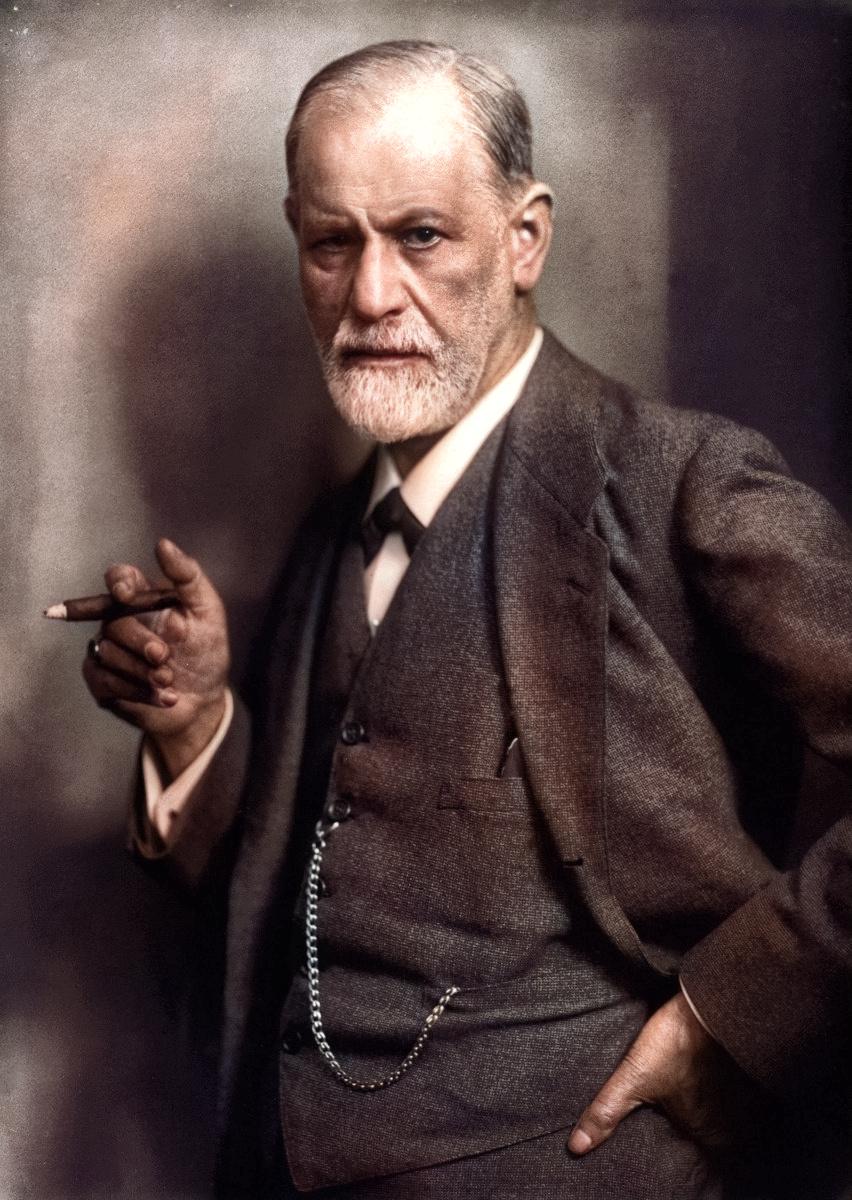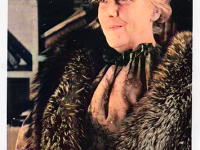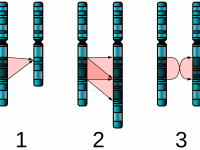
Sigmund Freud (1856-1939)
On May 6, 1856, Sigmund Freud was born, founder of modern Psychology and Psychoanalysis. As the father of Psychoanalysis, which dealt greater with subconscious motives to behavior, Sigmund Freud alone sculpted what modern psychology would become. His renowned ideas, which have focused on the Id, Ego, and Super-Ego of the mind are still studied to this very day and are employed in the offices of psychologists in some form or another worldwide. Freud’s theories, including the concept of the Oedipus complex, have had an enormous influence on art, literature, and social thinking. The so-called Freudian language has permeated the language of society, becoming commonplace in our way of thinking and sociological beliefs.
“I am actually not at all a man of science, not an observer, not an experimenter, not a thinker. I am by temperament nothing but a conquistador — an adventurer, if you want it translated — with all the curiosity, daring, and tenacity characteristic of a man of this sort.”
– Siegmund Freud, Letter to Wilhelm Fliess, Feb. 1, 1900.
Youth and Education
Freud, son of Galician parents of Jewish descent, was born Sigismund Schlomo Freud in Freiberg in Moravia, then part of the empire of Austria, today Příbor in the Czech Republic. His father, the wool merchant Jacob Freud came from a Hasidic family. When Jacob Freud’s flourishing wool trading business went bankrupt in the economic crisis that began in 1857, the family moved to Leipzig and a short time later to Vienna. Freud attended the Leopoldstädter Communal-Realgymnasium, where he graduated with distinction in 1873.
Studies on Cocaine
The same year, Freud enrolled at the University of Vienna to study medicine, where he studied with Carl Claus and Ernst Wilhelm Brücke. Interrupted by his one-year military service in 1879, Freud received his doctorate in medicine in 1881 after successful disputation about his dissertation on the subject of “On the spinal cord of lower fish species“. In 1882 Freud took up a post at the Vienna General Hospital under the internist Hermann Nothnagel and the psychiatrist Theodor Meynert, which he held until 1885. There he worked in the Laboratory of Brain Anatomy in the field of neurophysiology. From 1884 to 1887 Freud studied the pharmacology of the stimulant cocaine, a drug little known at the time. His study of cocaine, for which Freud had also made self-experiments, was published in 1884 and was the basis for the then revolutionary discovery of the local anaesthetic effect of cocaine on the eye, proven by experiments by Carl Koller.
The Freudian Slip of the Tongue
During a study trip to Paris in 1885, he visited the psychiatric clinic at the Salpêtrière Hospital, where Jean-Martin Charcot, a well-known professor of pathological anatomy who had diagnosed hysteria as a real disease and used hypnosis for serious psychological healing purposes, worked.[1] He gave him visual instruction on hysteria, and taught him the effects of hypnosis and suggestion. A few years earlier, the young Freud had also met the Austrian-Jewish doctor Josef Breuer. The case of “Anna O.” (Bertha Pappenheim), who had been undergoing treatment at Breuer since 1880, led to the joint development of the so-called “speech therapy”, a kind of preliminary stage of psychoanalysis. Finally, Freud turned away from hypnosis partly because of the embarrassing discovery that his patients fell in love with the therapist as a side effect of the hypnotic trance. Subsequently, as an alternative method to penetrate unconscious areas, he developed his form of treatment, which was mainly based on free associations of patients and dream interpretation, in order to understand and treat the mental structure of man (psychoanalysis). The “Freudian slip of the tongue” is named after him as the most obvious example of a mistake.
Psychoanalysis
“Psychoanalysis … should find a place among the methods whose aim is to bring about the highest ethical and intellectual development of the individual.”
– Siegmund Freud, Letter number 80 to James Jackson Putnam, March 30, 1914
Following his habilitation in 1885, Freud received a Privatdozentur für Neuropathologie at the University of Vienna in September. At the same time, he settled in Vienna as a doctor on 25 April 1886. In 1889 Freud Hippolyte visited Bernheim in Nancy, who carried out experiments with the so-called posthypnotic suggestion. From these experiments Freud concluded that there must be an unconscious person who is responsible for a large part of human actions. Sigmund Freud first spoke of “psychoanalysis” in 1896 as “Josef Breuer‘s somewhat subtle exploration process“; in the treatment of Bertha Pappenheim, he had succeeded in resolving her symptoms by allowing Pappenheim to detect and express the actual traumatizations that were concealed behind her symptoms. It was about naming what she had actually experienced in terms of injury, insult, disgust, devaluation, violence, etc., but was not allowed to name because of her “good upbringing”.
Oedipus Complex
“The sexual wishes in regard to the mother become more intense and the father is perceived as an obstacle to the; this gives rise to the Oedipus complex.”
– Siegm,und Freud, The Ego and the Id (1923)
Until September 1897 Freud repeatedly called his method “psychoanalysis”, but at the same time kept to the principle of Breuer’s treatment by having his patients investigate and name experiences of violence. However, at that time he was one-sidedly fixated on sexual violence, most recently as rape by the father between the ages of two and eight. He then rejected this approach in September 1897 and inverted it virtually into its opposite: Now he contemplated that the child’s uncontrollable impulsive desires and fantasies towards his parents were the origin of numerous disorders. He formulated the thesis of the “Oedipus complex” for the first time to Wilhelm Fließ: he postulated the phenomenon of unconscious libidinal bonds to his own mother while simultaneously maintaining a rivalry with his father.
Major Works
On November 4, 1899, Freud’s early major work, The Interpretation of Dreams, predated 1900. The writings Zur Psychopathologie des Alltaglebens (1904), Der Witz und seine Beziehung zum Unbewußten (1905) and Drei Abhandlungen zur Sexualtheorie (1905) followed at short intervals.[2] In 1902 Freud was appointed extraordinary professor after his patient Baroness Marie von Ferstel “inspired” the responsible minister Wilhelm von Hartel to do so by donating a work of art. In the same year Freud founded the “Psychologische Mittwoch-Gesellschaft” (Psychological Wednesday Socisety), from which the Vienna Psychoanalytical Association emerged in 1908: Alfred Adler, Wilhelm Stekel and a growing circle of colleagues and students gathered in his apartment every week to learn and discuss the new method. [3]

Group photo 1909 in front of Clark University. Front row: Sigmund Freud, G. Stanley Hall, Carl Jung; back row: Abraham Brill, Ernest Jones, Sándor Ferenczi
In 1913, the book “Totem und Tabu” appeared, in which Freud dealt with the cultural-historical phenomenon of the ban on incest. In 1920, Freud was appointed full professor. In the 1920s, further of Freud’s central works appeared, consolidating his international fame as the founder and most important representative of psychoanalysis, already founded on the interpretation of dreams, as e.g. Beyond the pleasure principle (1920), a work in which the terms “compulsion to repeat” and “death instinct” are introduced, or The Ego and the Id (1923), in which Freud introduces a structural model of the human psyche [4].
Why War?
In 1932, at the suggestion of the League of Nations, in an exchange of letters with Albert Einstein, he examined the possibilities of science to prevent wars: “Why war? In 1935 he became an honorary member of the British Royal Society of Medicine. After the “seizure of power” of the National Socialists in Germany, Freud’s works were also burned in May 1933. On 4 June 1938 Freud emigrated with his family via Paris to London, where he moved into a house in the Hampstead district. After about a year in exile, Freud had his life brought to an end by his family doctor. He was severely affected by cancer, could hardly speak and demanded euthanasia from his doctor. On September 23, 1939 at 3 o’clock in the morning, after a lethal dose of morphine desired by Freud, Max Schur established his death.
Ivan Szelenyi, 17. Conceptual Foundations of Weber’s Theory of Domination, [9]
References and Further Reading:
- [1] Jean-Martin Charcot – A Pioneer in Neurology, SciHi Blog
- [2] The Interpretation of Dreams according to Sigmund Freud, SciHi Blog
- [3] Alfred Adler and the Individual Psychology, SciHi Blog
- [4] Sigmund Freud’s Structural Model of the Human Psyche, SciHi Blog
- [5] Sigmund Freud at the Encyclopædia Britannica
- [6] Freud Archives at Library of Congress
- [7] Works by or about Sigmund Freud at Internet Archive
- [8] Sigmund Freud at Wikidata
- [9] Ivan Szelenyi, 17. Conceptual Foundations of Weber’s Theory of Domination, Foundations of Modern Social Thought (SOCY 151), YaleCourses @ youtube
- [10] Alexander, Sam. “In Memory of Sigmund Freud”, The Modernism Lab, Yale University.
- [11] Clark, Ronald W. (June 1980). Freud: The Man and the Cause (1st ed.). Random House Inc (T).
- [12] Margolis, Deborah P. (1989). “Freud and his Mother”. Modern Psychoanalsys. 14: 37–56.
- [13] Jones, Ernest. The Life and Work of Sigmund Freud. 3 vols. New York: Basic Books, 1953–1957
- [14] Timeline for Sigmund Freud, via Wikidata






awesome…! Very informative article, i really liked the information and the way it has been presented. Thanks for the article, keep up the good work.
Psychological Evaluation
Thank you so much for your encouraging comment! Keep on reading our blog and spread the word.
Best,
Harald